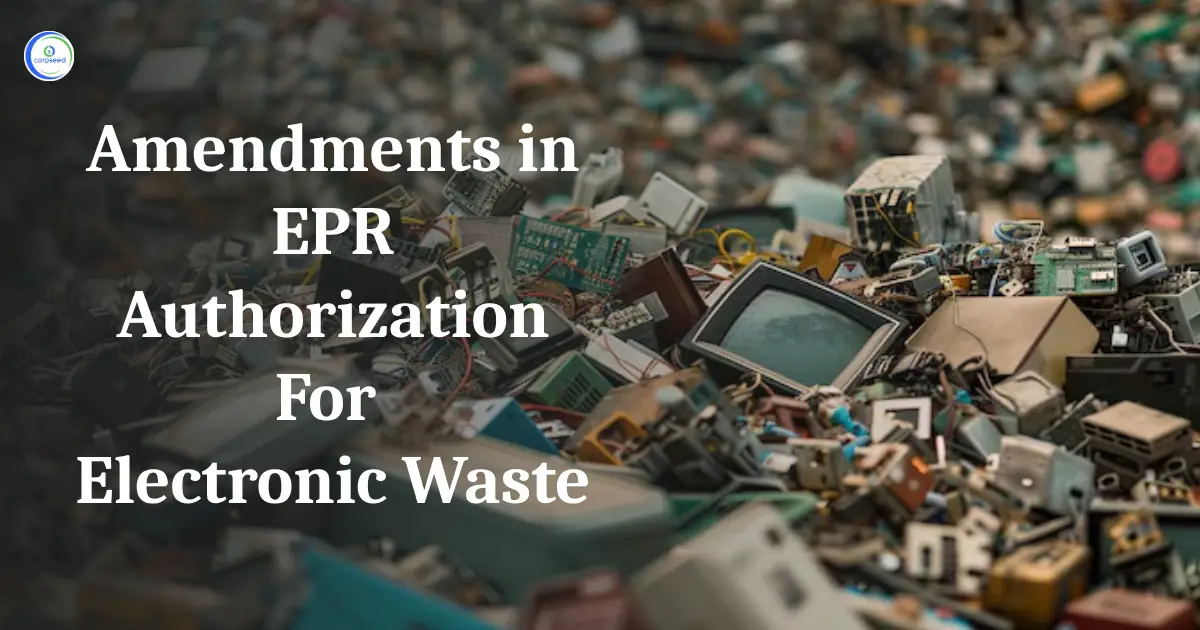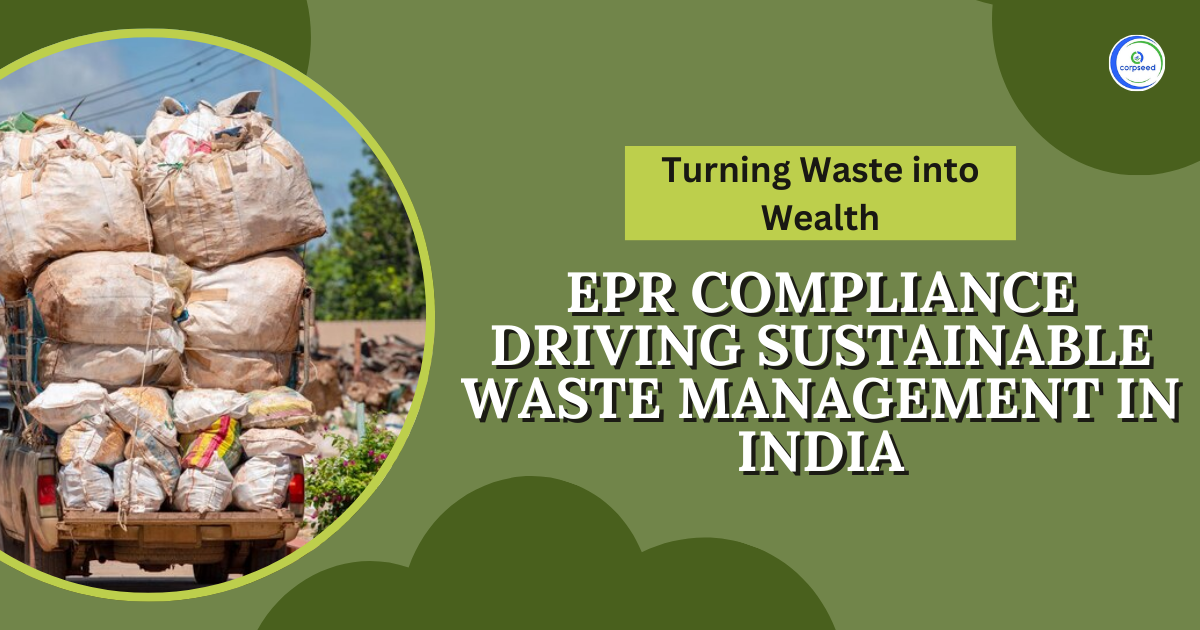Introduction: Battery Waste Management Rules
In this Blog, we shall discuss the new rules of battery waste management, 2022. The Ministry of Environment, Forest, and Climate Change Government of India published the Battery Waste Management Rules on 24 August 2022 to ensure environmentally sound management of waste batteries. The new rules were officially notified by the Central Government and they will replace the batteries (Management and Handling) Rules, of 2001.
Table of Contents
--------------Blog Contact Form-------------
The rules cover all types of batteries such as Electric vehicle batteries, Portable Batteries, Automotive Batteries, and Industrial batteries. It is based on the concept of Extended Producer Responsibility (EPR).
The Rules function based on the Extended Producer Responsibility (EPR) in which the producers (including importers) of batteries for the collection and recycling/refurbishment, and its prohibits disposal in landfills and incineration. To meet the obligation of EPR, producers may engage themselves or authorize any other entity to collect, recycle, or refurbish waste batteries.
What Are The Key Highlights Of The New Battery Waste Management Rules, 2022?
- EPR (Extended Producer Responsibility):- Under the new rules of battery waste management introduces the concept of Extended Producer Responsibility thereby making the producers and importers active participants in the collection, recycling, and resume of the battery waste materials in the new production process.
- Centralized EPR Portal:- Under the new rules, the Government has launched a new centralized online portal, allowing producers and recycling agencies or refurbishing agencies to exchange EPR certifications for complete transparency in the recycling cycle.
- Promote entrepreneurship:- The new rules promote the setting up of new industries and entrepreneurship in the domain of recovery, recycling, and refurbishment of waste batteries.
- Battery recycling standards:- The new rules specify the standard or norms for recycling waste batteries. According to the new rules, the minimum percentage of recovery of materials from waste batteries is mandatory. This will lead to new and innovative technological enhancements in battery recycling.
- Use of Recycled materials in the production process:- Under the new rule it is also mandated that the producers should have to use a defined percentage of recycled materials, recovered from old waste batteries in the production cycle for new drugs.
- Penalty for pollution:- Any producer or importer violating extended producer Responsibility targets or failing to fulfill responsibilities and obligations defined under the new rules will have to pay an environmental compensation penalty. Funds collected as the penalty for environmental violations will be used for the collection and recycling of uncontrolled waste batteries.
- Functions of producer:- They shall have the obligation or extended producer responsibility for the battery that they introduce in the market to ensure the attainment of the recycling or refurbishing obligations.
The producer will meet the collection and recycling and refurbishment targets as mentioned in schedule II.
- The person or an entity involved in the manufacturing of the battery shall have to register through the online centralized portal as a producer in Form 1(A). The certificate of registration shall be issued in form 1 (B).
- The waste batteries collected by the producer will be sent for recycling and shall not be sent for landfilling or incineration.
- The producer will submit the extended producer responsibility plan in Form 1(C) to the central pollution control board by 30 June every year.
| Minimum use of recycled materials out of the total dry weight of a Battery in Percentage | |||||
| S. No. | Types of Battery | 2027-28 | 2028- 29 | 2029-30 | 2030-31 and onwards |
| 1 | Portable | 5 | 10 | 15 | 20 |
| 2 | Electric Vehicle | 5 | 10 | 15 | 20 |
| 2024-25 | 2025-26 | 2026-27 | 2027-28 and onwards | ||
| 3 | Automotive | 35 | 35 | 40 | 40 |
| 4 | Industry | 35 | 35 | 40 | 40 |
- Functions of Consumer:- To discard the waste battery separately from the waste streams, especially from mixed, domestic waste streams to ensure that waste batteries are disposed of in an environment-friendly manner by giving it to an entity engaged in collection or refurbishment.
- Functions of Public Waste Management Authorities:- the management authorities will hand over the collected waste battery to the producers or agencies acting on their behalf or the entity engaged in refurbishment or recycling with a view to refurbishment or recycling of those waste batteries or carrying out their recycling or refurbishment themselves.
- Functions of entity involved in the collection, segregation, and treatment:– Entities involved in the collection, segregation, and treatment to hand over the waste battery to a registered refurbished or recycler.
It shall be the responsibility of the entity to ensure that a facility is by the guidelines prescribed by the Central Pollution Control Board.
SCHEDULE 1
Prohibition and Labeling Requirements
- Prohibition on the metal item in the battery
- A battery that contains up to 0.0005% (5 ppm) of mercury weight may only be placed till 2025.
- A Battery that contains up to 0.002% (2000 ppm) of cadmium by weight may only be placed.
- The battery shall not apply to button zinc silver oxide Batteries with a mercury content < 2% and button.
- zinc-air Battery with a mercury content < 2% by weight.
- Portable battery intended for use in
- Emergency and alarm systems, including emergency lighting.
- medical equipment.
Labeling requirements
- The producer shall ensure that all battery packs are appropriately marked with requisite labeling requirements as per the standard prescribed by the Bureau of Indian Standards.
- All requisites labels and symbols shall be printed visibly, legibly, and indelibly.
- No person shall place on the market any battery or battery pack unless it is marked with the crossed out wheeled bin symbol as shown in covering at least 3% of the area of the largest side of the battery.
- When the size of the battery or battery pack is such that the crossed-cut wheeled bin symbol is smaller than 0.5cm x 0.5 cm, the battery or battery pack needs
- No person shall place the market on the battery or a button cell containing mercury, cadmium, or lead unless it is marked with the respective chemical symbol- Hg, cd, PB.
SCHEDULE II
Targets for Extended Producer Responsibility
- In case a new producer introduces a battery in the market in subsequent years after the publication of these rules, the extended producer responsibility targets shall be applicable for different types of batteries, based on the average life of the battery, mentioned in the tables below for the respective types of battery. 2. Applicable for the different types of batteries based on the average life of the battery.
- The Extended producer responsibility.
- Recycling waste of batteries means recycling battery materials such as lead, nickel, lithium, cobalt, zinc-based battery, etc.
- Producer shall meet their Extended Producer Responsibility obligation through the extended producer responsibility certificate.
Conclusion
In this Blog, we have discussed the new battery waste management rules, 2022. The rules were officially notified by the Central Government on 24th August 2022, and they will replace the Batteries (Management and Handling) Rules, 2001. Above mentioned changes shall be applicable to all the batteries irrespective of shape and size.
EPR Authorization
EPR Registration is done by manufacturers, importers, and brand owners (PIBOs) of electrical and electronic equipments (EEE). The main objective of EPR is to encourage producers or manufacturers to design products that are easier to recycle and dispose of responsibly. EPR applies to various sectors, including electronics, packaging, batteries, and more.
Battery Waste Management
Batteries (Management & Handling ) Rules apply to every manufacturer, importer, re-conditioner, assembler, dealer, recycler, auctioneer, consumer and bulk consumer involved in manufacture. Team Corpseed will help you to draft and submit online & offline application to respective SPCB and CPCB.
Lithium-ion Battery Import License
Team Corpseed will help your organization to draft and file application for grant of Lithium-ion Battery Import License from MoEF & CPCB. Get license in just 15 Days with best & lowest price guaranteed.
This portion of the site is for informational purposes only. The content is not legal advice. The statements and opinions are the expression of author, not corpseed, and have not been evaluated by corpseed for accuracy, completeness, or changes in the law.
BOOK A FREE CONSULTATION
Get help from an experienced legal adviser. Schedule your consultation at a time that works for you and it's absolutely FREE.

_copy.jpg)



.webp)



